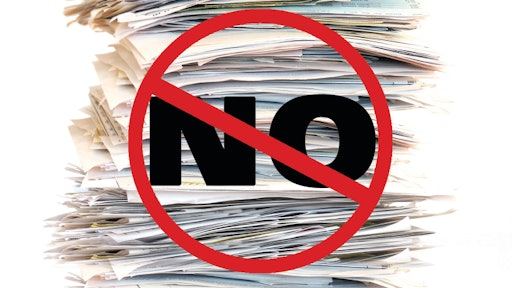
Increasing business efficiency is the most compelling reason to invest money in a project. According to research from Cabinet NG, investing in an electronic-based document management system can not only help you increase efficiency, but also save thousands of dollars a year.
A comprehensive electronic document management system (EDMS) can provide a method for storing all relevant documents in your office. If the EDMS can be integrated into the point software solutions that each department uses, significant gains in productivity and efficiency can be gained.
For instance, the accounting department could access documents (orders, invoices, contracts, etc.) online from their accounting application. Sales could access documents from their CRM (customer relationship management) software. The goal of an EDMS should be the software glue that ties the different software packages together in such a manner that all departments in a business gain efficiencies.
What is a document management solution?
Simply put, a document management solution is a system that can replace not only the paper files and documents in an office, but enable the user to send an electronic document through the same steps a paper document or file would follow.
For instance, an installation crew’s job sheet likely has to make its way from the crew/foreman to the appropriate manager to the accounting department. A document management system must provide this same path. Along the way it must also protect documents so that only the necessary people can view them.
An EDMS is a step up from the point solutions like spreadsheets and word processors as the entire office must be capable of using them. Therefore, an EDMS must be easy and straightforward to use—and ideally would integrate with other applications the office is already using with a minimum of effort.
Benefits of a document management solution
Documents are stored in an electronic format which is easily backed up and can be copied offsite relatively easily. Multiple copies of the documents can be made easily and cheaply. A paper-based system requires copies of each piece of paper as they are generated. At 5 cents per page, this can become prohibitively expensive.
Filing documents is relatively easy, particularly if the electronic document management system is integrated with other software packages your company uses. Filing paper documents requires a trip to the filing cabinet. This can cost you nearly $100 or more per month in lost productivity depending on the size of your company.
Misfiled documents can be easily found using the search capabilities built into the electronic document management system. Misfiled documents in a paper-based system can be impossible to find depending on how and when they were misfiled. Ultimately, they can cost you hundreds of dollars a month in lost productivity, missed billings and angry customers, etc.
Moving documents from one point in the workflow to another is simple. Determining who has a document or folder in workflow is available at all times. Finding a paper folder somewhere in a workflow can be difficult at best, particularly if it’s buried on someone’s desk.
Using electronic forms allows data to be pre-filled, eliminating many of those common human errors. Filling out paper forms can be tedious and prone to human error.
The cost of remaining paper-based
In addition to the benefits of going paperless listed above, there are other paper-based costs you should consider:
- How many people handle each document?
- How much time does it require to retrieve a paper document?
- A standard four-drawer filing cabinet requires at least 12 sq ft of office space, and each square foot costs about $15 per year. How many cabinets do you have? If you have six, they’re costing you more than $1,000 a year.
- Do you rent an offsite storage facility? What is the monthly cost?
- How much do you spend on filing supplies per month?
By now it should be evident that an EDMS can be a very valuable tool for small to mid-size businesses. When you add up all of the productivity gains and other incidental cost savings, a solid EDMS can normally pay for itself in less than a year, oftentimes in eight months depending on the size of your operation.
Article based on a White Paper written by Andrew Bailey, President of Cabinet NG. Download it free of charge by clicking here.





























